Abstract/Paper Submission
May 1 May 25, 2015 (Extended)
Abstract/Paper Submission
May 1 May 25, 2015 (Extended)
Early Registration
September 15, 2015
Early Registration
September 15, 2015
Early Registration
September 15, 2015

May 1 May 25, 2015 (Extended)
May 1 May 25, 2015 (Extended)
September 15, 2015
September 15, 2015







Photos by courtesy of Prof. Fumihiko Asano, Japan Advanced Institute of Science and Technology, Japan
Living things that survive natural selection have beautiful skills and intelligent behavior. A swarm can perform many functions that its component individuals cannot possibly accomplish alone. In addition to the ability to adapt to the environment, but also to construct a suitable environment for its own advantage. The constructive understanding of intelligence of living things is a very interesting approach from the point of view of biology and engineering. The aim of this first symposium SWARM2015 is the construction of a bridge between biologists and engineers who are interested in the intelligence of living things and the creation of a new academic field by integrating biology and engineering. This symposium will focus on the biological and engineering approaches to understanding swarm behavior and biologically-inspired robotics. All aspects of swarm behavior and bio-inspired robotics are welcome, including, but not limited to, the following topics:
Diversity of Collective Decision-Making Patterns Resulting from Social Behaviour
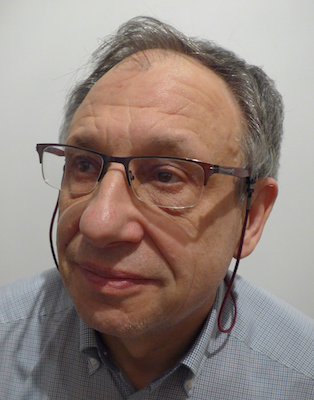
Prof. Jean-Louis Deneubourg
(Université Libre de Bruxelles)
Control and Coordination of Multi-Robot Systems
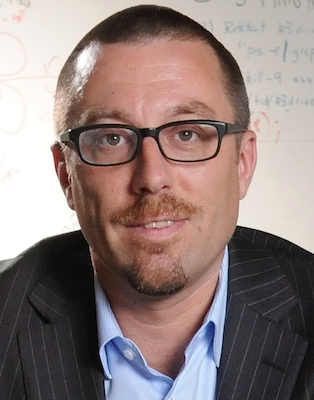
Prof. Magnus Egerstedt
(Georgia Institute of Technology)
Distributed Information Processing by Insect Societies
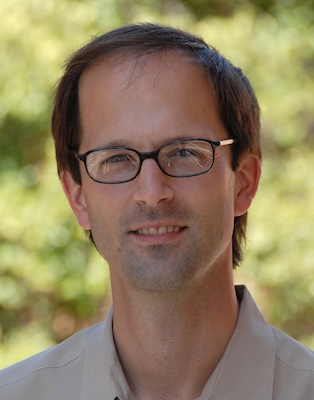
Prof. Stephen Pratt
(Arizona State University)
Group-living animals are often faced with choosing between one or more alternative resource sites. A central question is how a collective decision is taken. This experimental and theoretical review demonstrates that choices can emerge through nonlinear interaction dynamics between « equal » individuals without perfect knowledge or leadership. We explore a number of situations differing in the number and quality of the options, in the type of interactions, and in the number of individuals concerned. The interplay between individual responses to site characteristics and to group-members can give rise to a diversity of patterns of decision-making. We will focus on how the environmental characteristics influence the collective responses and their diversity in different situations. We will also discuss how the individual complexity affects the collective response and how the synergy between artificial agents and organisms is the source of new collective efficiency. Using choice experiments and a theoretical approach, we will show how individuals in a group dramatically outperform the problem-solving ability of a single individual. Our research points towards a generic self-organized collective decision-making process shared by many group living-species and its extension to mixed animal-artificial agents.
Jean-Louis Deneubourg is Research Director at the Belgium National Science Foundation (FNRS) and professor at the Faculty of Sciences of the Université Libre de Bruxelles. He graduated as a physical-chemist from the ULB and he obtained his PhD from the ULB (1979). He published 3 books and around 300 scientific articles. His research is concerned with collective decision-making/pattern formation in animal societies, mainly social and gregarious arthropods and vertebrates (fish and primates) and how these groups can display cognitive capabilities that go beyond the scope of single individuals. Among his contributions, he was the first to study collective decision-making associated to the trail recruitment in ants. Some of his results were a source of inspiration for the ant colony optimization algorithms developed by computer scientists. Since 2000, has also working on interaction between artificial objects and animals and on mixed societies, societies where animals and robots communicate and cooperate.
The last few years have seen significant progress in our understanding of how one should structure multi-robot systems. New control, coordination, and communication strategies have emerged and, in this talk, we discuss some of these developments. Inspiration will be drawn from naturally occurring, self-organizing systems and we will show how one can go, in a provably correct manner, from global, team-level specifications to local coordination rules for achieving and maintaining formations, area coverage, and biologically inspired swarming behaviors.
Magnus Egerstedt is the Schlumberger Professor in the School of Electrical and Computer Engineering at the Georgia Institute of Technology, where he serves as Associate Chair for Research. Dr. Egerstedt conducts research in the areas of control theory and robotics, with particular focus on control and coordination of complex networks, such as multi-robot systems, mobile sensor networks, and cyber-physical systems. Magnus Egerstedt is the Deputy Editor-in-Chief for the IEEE Transactions on Network Control Systems, the director of the Georgia Robotics and Intelligent Systems Laboratory (GRITS Lab), and a Fellow of the IEEE.
Insect societies are leading examples of decentralized control in the natural world, and a source of inspiration for the design of analogous artificial systems. In this talk I will use examples from ants to illustrate the behavioral mechanisms behind the colony's complex social organization. I will focus on how coordinated group behavior emerges from interactions among many poorly informed ants following appropriate decision rules. By focusing on the interplay between cognition at individual and group levels, I will consider how cooperation both enhances, and is constrained by, the abilities of individual insects.
Stephen Pratt is an Associate Professor in the School of Life Sciences. His research focuses on the social organization of ant and bee colonies, with a special focus on mechanistic understanding of highly coordinated group behavior. He also works with engineers to apply the resulting insights to artificial systems such as robotic swarms. He received his PhD from Cornell University and has worked at the University of Bath, the Massachusetts Institute of Technology, and Princeton University.
Social Conflicts and the Underlying Autonomous Decentralized Control in Ants
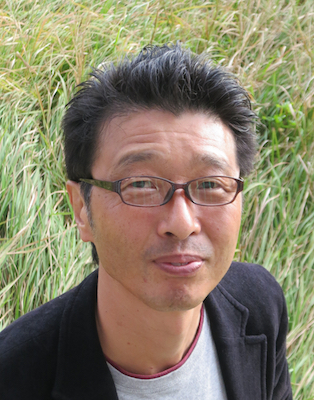
Prof. Kazuki Tsuji
(University of the Ryukyus)
Top-Down Control of Reproduction and Self-Organization of Labor in Termites
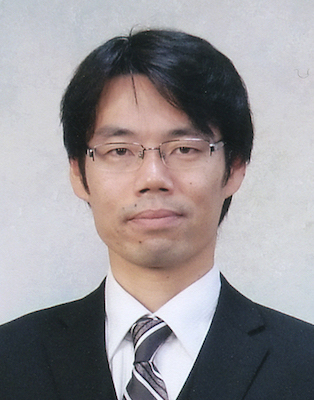
Prof. Kenji Matsuura
(Kyoto University)
Swarm robotics is about constructing and controlling swarms of autonomous robots that cooperate to perform tasks that go beyond the capabilities of the single robots in the swarm. In this talk, I will give an overview of recent and ongoing research in swarm robotics in my research lab, IRIDIA, at the Université Libre de Bruxelles. In particular, I will present results obtained with homogeneous and heterogeneous swarms of robots that cooperate both physically and logically in search and retrieval tasks.
Marco Dorigo received the Laurea, Master of Technology, degree in industrial technologies engineering in 1986, and the Ph.D. degree in electronic engineering in 1992 from the Politecnico di Milano, Milan, Italy. From 1992 to 1993, he was a Research Fellow at the International Computer Science Institute, Berkeley, CA. In 1993, he was a NATO-CNR Fellow, and from 1994 to 1996, a Marie Curie Fellow. Since 1996, he has been a tenured Researcher of the FNRS, the Belgian National Funds for Scientific Research, and co-director of IRIDIA, the artificial intelligence laboratory of the ULB. He is the inventor of the ant colony optimization metaheuristic. His current research interests include swarm intelligence, swarm robotics, and metaheuristics for discrete optimization. He is the Editor-in-Chief of Swarm Intelligence, and an Associate Editor or member of the Editorial Boards of many journals on computational intelligence and adaptive systems. Dr. Dorigo is a Fellow of IEEE, AAAI, and ECCAI. He was awarded the Italian Prize for Artificial Intelligence in 1996, the Marie Curie Excellence Award in 2003, the Dr. A. De Leeuw-Damry-Bourlart award in applied sciences in 2005, the Cajastur International Prize for Soft Computing in 2007, an ERC Advanced Grant in 2010, the IEEE Frank Rosenblatt Award in 2015, and the IEEE Evolutionary Computation Pioneer Award in 2016.
Groups of individuals in social insects form cooperative societies or "superorganisms". However, it is also known that evolutionary conflicts which can lead to "the tragedy of the commons" are widespread in those societies. A major question in evolutionary biology is how resolution of conflicts among the lower-level units was achieved to form the higher unit. Policing is an important mechanism that enables the formation of group harmony by preventing selfish behavior of the lower units. Ohtsuki and Tsuji (2009) has proposed a new hypothesis on the mechanism of evolution of worker policing in social Hymenoptera. A novel prediction of this model is that worker policing will depend on the stage of colony growth and under queen single mating strong worker policing will occur only at the ergonomic stage. In this symposium I will talk about two topics related to this hypothesis. First, I show data strongly supporting Ohtsuki and Tsuji's prediction in the ponerine ant Diacamma sp. (Tsuji et al. unpublished data, Tsuji et al. 2012). Second, I suggest a proximate mechanism of colony size related behavioral regulation in this ant that is achieved though individual contacts. This is a pioneering study revealing an explicit colony size "sensing" mechanism in social insects.
Kazuki Tsuji started his science in the sociobiological study of the parthenogenetic ant Pristomyrmex supervised by Yosiaki Ito in Nagoya. Recently he has extended his scientific interest to the general evolutionary and ecological dynamics including community ecology and sociophysiology. After receiving a Ph.D. from Nagoya University in 1989, he did postdoctoral research at the University of Würzburg, where he was supervised by Bert Hölldobler. He was hired for a tenured position at Toyama University in 1995, and in 2001, he moved to the University of the Ryukyus as a professor. Currently, he is the head of the IUSSI (International Union for the Study of Social Insects) Japanese Section.
Social insects rely heavily on pheromone communication to maintain their sociality. Their reproductive system is regulated by queen pheromone. We identified a queen-produced volatile chemical that inhibits the differentiation of new neotenic reproductives in a termite. In contrast to this top-down control, social insects also rely on self-organizing rules to perform social labor, as members communicate with neighbors to make consensual decisions. By using shelter-tube construction and egg piling behavior as model systems, we are identifying the algorithm of collective building and decision making system in termites.
Kenji Matsuura is Professor of the Graduate School of Agriculture at Kyoto University, where he has been since 2012. He received his undergraduate degree from Kyoto University in 1998 and his Ph.D. from Kyoto University in 2002. From 2002 to 2004 he was a postdoctoral research fellow at Harvard University. Following an Associate Professor at Okayama University, he moved in 2012 back to Kyoto University as Professor of Insect Ecology. He has received a number of awards for his research excellence (including Miyaji Award of the Ecological Society of Japan, Population Ecology Young Scientist Award and Japan Ethological Society Award) and was awarded Japan Academy Medal in 2011. His research primarily focuses on the behavioral ecology and evolution of termites, including the evolution of reproductive systems, the evolution of pheromone communication, as well as the interactions between termites and other organisms. His major scientific contributions and discoveries include: includes the finding of the novel reproductive system of termites, Asexual Queen Succession (AQS) (published in Science); the first identification of termite queen pheromone (published in PNAS); discovery of the termite-egg mimicking fungus ‘termite ball’ and identification of the mechanism of its egg mimicry (published in Royal Society B and Current Biology); test of kin selection in termites (published in Nature Communications).
Deadline for poster abstract submission: June 30, 2015
Notification of acceptance: July 31, 2015
Workshop: October 28, 2015
Animals show fascinating adaptive and versatile abilities. For example, they can move around and at the same time avoid obstacles in order to successfully navigate through their complex cluttered environment for finding their food source. While moving, they can also adapt their locomotion to deal with unknown situations. Furthermore, they can interact with each other to form collective behavior for anti-predator, enhanced foraging, and even increased locomotion efficiency. These complex achievements emerge from tightly as well as loosely coupled interactions between many ingredients including biomechanics (i.e., morphology, muscles, and materials), sensory feedback, centralized/decentralized mechanisms, and communication. Developing these key ingredients and implementing them in artificial systems to approach the level of performance of living creatures remains a grand challenge. To address these issues, our workshop at SWARM 2015, “Embodied sensorimotor interaction: from locomotion to collective behavior” will bring together leading experts, working in the domains of bio-inspired robotics, swarm robotics, modular robotics, embodied AI, evolutionary robotics, and computational neuroscience, to present their recent developments on robot locomotion and collective behavior and discuss future directions to overcome this challenge.
| 12:40 | Workshop start |
| 12:40–12:45 | Brief Introduction, announcements Florentin Wörgötter |
| 12:45–13:15 | Embodied auditory localization: the Lizard ear Danish Shaikh |
| 13:15–13:45 | Flora-robotica: plant-robot hybrid collective organisms Kasper Støy |
| 13:45–14:15 | Behaviour organisation and learning with Dynamic Neural Fields: towards neuromorphic cognitive robots Yulia Sandamirskaya |
| 14:15–14:45 | Muscular-Skeletal Biped Robots for Understanding Morphological Functions of Human Body Structure Koh Hosoda |
| 14:45–15:15 | Legged robot and neuromusculoskeletal model for revealing adaptation mechanism in split-belt treadmill walking Shinya Aoi |
| 15:15–15:45 | Insect gait mechanism through neuromechanical interaction: A modeling study Yuichi Ambe |
| 15:45–16:00 | Coffee Break |
| 16:00–16:30 | Neural dynamics and synaptic plasticity in a recurrent neural network for complex autonomous behaviors of a biomechanical walking robot Poramate Manoonpong |
| 16:30–17:00 | Mixed Reality Experimentation for Multirobot Systems Nora Ayanian |
| 17:00–17:30 | Control without Control(ers): How Robots can Learn to Behave with Memory Florentin Wörgötter |
| 17:30–18:10 |
|
| 18:10–18:30 | Discussion & Closing |
Organized session proposals are invited. An orgnized session proposal should include the title, aim and scope of the session, and the names, e-mail addresses, affiliations and short bios of the organizers. The proposal can include additional information such as a list of potential contributors. At least three papers should be arranged in an organized session.
Proposals should be sent by e-mail to SWARM 2015 Secretariat. (Closed. Thank you.)
All proposals should be submitted by May 1st, 2015. Early proposals are highly encouraged.
Invited Talk: Multi-robot Coordination Based on Gradient Systems by Dr. Shinsaku Izumi (Okayama Prefectural University)
In this talk, we discuss a controller design method for multi-robot coordination based on gradient systems. Gradient systems are systems where the time derivative of the state is equal to the gradient of a function. In the design method, the controller of each robot is constructed so that the resulting feedback system is the gradient system for a function representing the achievement degree of a motion-coordination task. I introduce this design method and show its application to robotic mass games, that is, to let robots organize themselves into a formation displaying a given grayscale image.
Scopes (but not limited to): Formation control, Swarm intelligence, Embodiment cognition, Emergent intelligence, Adaptive functionality

The secret of their amazing balance lies in three gyro sensors, which identify the direction that their bodies are leaning toward, and then move them in that direction. Body alignment remains perfect, even when dancing atop the ball. This highly sophisticated system is an upgraded version of a system originally developed for the MURATA BOY and MURATA GIRL robots.
Murata Cheerleaders use gyro sensors much like those found in the electronic stability control systems of vehicles.
Each Murata Cheerleader is equipped with five ultrasonic microphones and four infrared sensors, installed in its head. Data from these sensors are shared via a wireless network, enabling each Cheerleader's position to be accurately located in real time. Relative positions are determined with a combination of ultrasonic and infrared signals, which travel at different speeds. It's the same principle as counting the seconds between a flash of lightning and the sound of thunder to determine distance.
Each Cheerleader has a communication module to relay the data to a central control system, where relative positions are processed to ensure that the Murata Cheerleaders move flawlessly without bumping into each other.
Murata Cheerleaders contain many Murata components, from sensors, capacitors and inductors to filters and much more. Read more about Murata products.
This is a collaboration of Murata and Kyoto University.
The swarm control strategies are developed by the laboratory of Prof. Fumitoshi Matsuno.
Room I |
Room II |
Room III |
|---|---|---|
| 9:30–10:30 Keynote Speech (1) by Prof. Jean-Louis Deneubourg | ||
| 10:40–11:40 Tutorial (1) by Prof. Marco Dorigo | ||
| 11:40–12:40 Lunch Break | ||
| 12:40–14:20 OS2: Multi-Agent Models on Swarm Behavior (1) |
13:00–14:20 Network |
12:40–14:15 Workshop: Embodied sensorimotor interaction |
| 14:30–16:10 OS2: Multi-Agent Models on Swarm Behavior (2) |
14:30–16:10 Robot Control |
14:15–15:45 Workshop: Locomotion |
| Cofee Break | ||
| 16:00–16:30 Workshop: Locomotion | ||
| 16:20–18:00 OS2: Multi-Agent Models on Swarm Behavior (3) / Social Interactions |
16:20–18:00 Self-Organization |
16:30–17:30 Workshop: Collective behavior |
| 17:30–18:10 Workshop: Spotlight 3-5 min talks for posters | ||
| 18:10–18:30 Workshop: Discussion and closing | ||
Room I |
Room II |
Room III |
Room IV |
|---|---|---|---|
| 9:30–10:30 Keynote Speech (2) by Prof. Magnus Egerstedt |
|||
| 10:40–11:40 Tutorial (2) by Prof. Kazuki Tsuji |
|||
| 11:40–13:00 Lunch Break | 11:40–13:30 Demonstration of Swarm Robots "Murata Cheerleaders'" |
11:40–13:00 Lunch Break | |
| 13:00–15:00 Poster Session (1): Systems |
13:00–15:00 Poster Session (2): Robotics |
13:00–15:00 Poster Session (3): Biology | |
| 15:20–17:20 OS4: Implicit and Explicit Control for Swarm Intelligence |
15:20–17:20 Multi-Agent Systems |
15:20–17:20 Foraging |
|
| 18:10–20:10 Banquet at at ArtGrace Wedding Hills | |||
Room I |
Room II |
Room III | |
|---|---|---|---|
| 9:30–10:30 Keynote Speech (3) by Prof. Stephen Pratt | |||
| 10:40–11:40 Tutorial (3) by Prof. Kenji Matsuura | |||
| 11:40–12:40 Lunch Break | |||
| 12:40–13:40 OS1: Control Theory on Networks (1) |
12:40–13:40 Locomotion |
12:40–13:40 Optimization |
|
| 13:50–15:10 OS1: Control Theory on Networks (2) |
13:50–14:50 Evolutionary Robotics |
13:50–15:10 OS5: Cooperation and Coordination in Swarm Dynamics (1) |
|
| 15:20–16:20 Formation (1) |
15:20–16:20 OS3: Unsolved Problems in Robotic Limit Cycle Walking (1) |
15:20–16:20 OS5: Cooperation and Coordination in Swarm Dynamics (2) |
|
| 16:30–17:50 Formation (2) |
16:30–17:50 OS3: Unsolved Problems in Robotic Limit Cycle Walking (2) |
16:30–17:50 OS5: Cooperation and Coordination in Swarm Dynamics (3) |
|
| 18:10–20:10 Farewell Party at Camphora | |||
Room IV: Biology has regular posters (P3-1 to P3-9) and workshop's posters (P3-W1 to P3-W7). The speaker of the regular posters are required a brief 3-minute spotlight talk and a poster presentation. The speaker of the workshop poster requires only the poster presentation.
May 1 May 25, 2015 (Extended. UTC.)
July 1, 2015
(OS Papers: August 1)
September 1, 2015
There are three options for submission: full paper, short paper or abstract. The only difference between the formats of these options is the number of maximum pages. Full papers and short papers have an 8-page or a 4-page maximum length and should report on new unpublished work. Surveys are also welcome as full papers. Abstracts are limited to 2 pages and can report on previously published work with the expectation of offering new viewpoints on that work. On submission, you will be able to choose your preferred presentation style—oral or poster presentation. No distinction will be made between full papers, short papers and abstracts.
The use of LaTeX/MS-Word with the following style format is strongly recommended for preparing your manuscripts.
The MS-WORD template in a single-column format is available only for abstracts without figures and tables.
Your final camera-ready paper formatted according to the required style should be submitted via the EasyChair.
Before submission, you need to finish paying the early registration fee.
Selected papers will be invited for further revision and extension for possible publication
in a special issue of Artificial Life and Robotics, Springer.
Invitations can be sent to candidates regardless of the submission category.
| Registration Type |
(on or before Sep. 15) |
Onsite |
|---|---|---|
| General | JPY 55000 | |
| Student | JPY 45000 | |
| Each Additional Paper (Up to 4) | n/a | |
| Banquet | JPY 3000 |
Hotel reservation is available on the registration site. The following hotels (not listed on the site) provide reasonable offers and are our recommendations:
Banquet of October 29 (Thu) will be held at ArtGrace Wedding Hills at night. ArtGrace Wedding Hills is accessible from the Kyoto University Clock Tower Centennial Hall (the conference venue) by walk. The banquet fee is 3,000 JPY for each person, and is NOT included in the registration fee. To participate in the banquet, you must buy a ticket in advance.
You are invited to the symposium farewell party at Camphora. It starts at 6:10 p.m. on October 30 and is free of charge! The cafe restaurant is at the west of the main front gate of Kyoto University.
Banquet: Thursday, October 29, 2015 / Farewell Party: Friday, October 30, 2015
The Clock Tower Centennial Hall, Yoshida Campus, Kyoto University
WiFi internet access at the venue will be available through the eduroam program.
eduroam (External Links 1/ 2) is the service by NII, which realize the mutual use of wireless LAN between the educational research institute such as universities. Kyoto University belongs to the project and eduroam account will be available. The way to gain internet access is using an existing eduroam account. You can check if your institute is participating in the eduroam program on these sites (External Links 1/ 2). For information on eduroam accounts, please check your local information provided by your institute.
If you have any questions regarding the website or the SWARM 2015 program, please feel free to contact SWARM Secretariat:
swarm2015[at]mechatronics.me.kyoto-u.ac.jp
(Please replace [at] with @ in the e-mail address.)